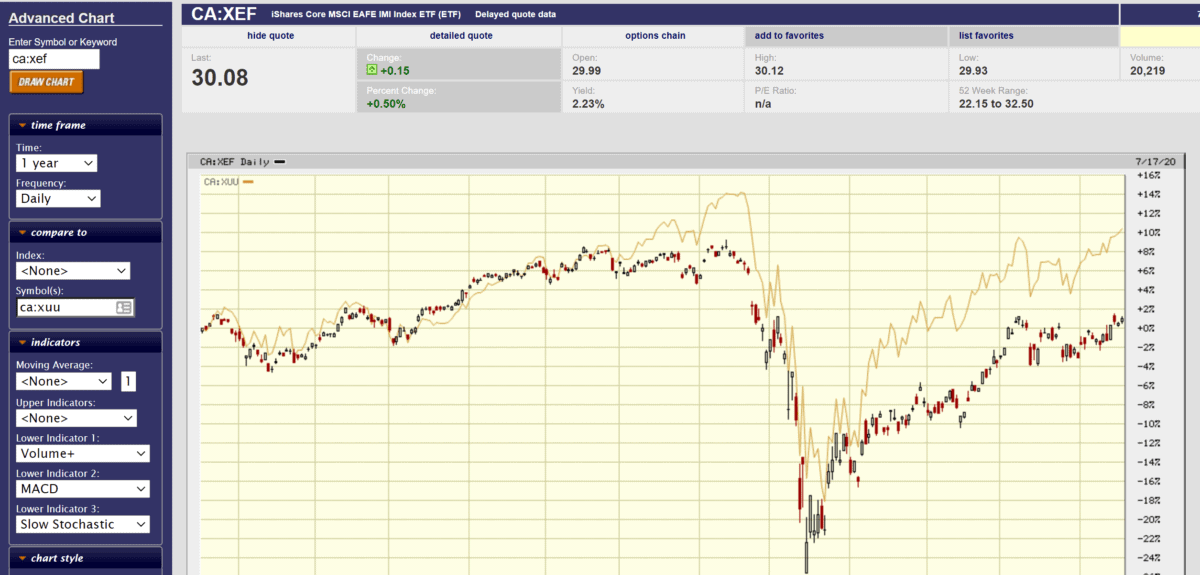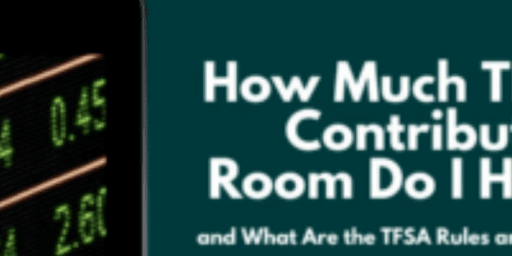The Hot Potato Investing Strategy
If you’ve been following this blog for a while, you’ll know that most of my wealth is in the stock market for the long-term. While there are many short term stock trading strategies, many of these strategies just don’t work out for regular investors. In fact, the initial losses often turn beginner investors away from the stock market altogether.
Data shows that over the long-term, the broad stock market goes up with an after-inflation return that is hard to beat. What does the broad stock market mean? It generally means that if you were to take all the biggest (and likely most profitable) companies in the world and owned them in a portfolio, the value would go up over the long-term (think 15+ years). Albeit, it may be a bumpy ride along the way (cough cough dot com bust, financial crisis, and the recent Covid-19 crash), but the market still goes up over longer periods – especially when you count dividends (see my article on Canadian Dividend Stocks).
It’s now easier than ever for investors to own a piece of the largest companies in the world through owning indexed investments – especially with the invention of All in one ETFs. I’ve written before about indexing the market and how it can be done through owning lower-fee mutual funds and better still, owning through even lower-cost index ETFs.
While indexing can be boring (set it and forget it), the growth over the long-term can actually be a little surprising even if returns appear mediocre. That’s thanks to the power of compounding returns. As an example of a 30-year-old who contributes $7,000/year (increasing contributions annually with inflation) to a retirement investment account that is indexed and assumed to return 4% after inflation. 4% may not seem like much, but after 35 years those $600/month contributions result in a $1M RRSP (assuming that tax refunds are re-invested).
As you can probably tell, I’m a fan of indexing and use the strategy for a number of my accounts like my kid’s education fund, and my spouses RRSP.
What is the Hot Potato Strategy?
So enough about regular indexing, what’s this Hot Potato Strategy? This strategy, founded by investment guru Norm Rothery, is essentially supercharging your index investment strategy by over-weighting the strongest performer (over the last 12 months) within your globally indexed portfolio. Mr. Rothery has shown that this strategy outperforms regular indexing over the long-term, but more on the performance in a little bit.
Let’s clarify this investment concept a little with an example.
In a diversified indexed portfolio, you’ll typically find the following portfolio (often called the couch potato portfolio) with various percentages of the holdings:
- Canada Index ETF/Mutual Fund
- US Index ETF/Mutual Fund
- MSCI International Index ETF/Mutual Fund
- Bond Index ETF/Mutual Fund
A typical portfolio for a young investor would be 25% of each of the positions and rebalance with new money and/or any time period that the investor wishes.
With the Hot Potato strategy, instead of spreading your money over four positions, you would concentrate your portfolio on a single position. Which position? The position that has performed the best over the past 12 months.
What about re-balancing? You can either re-balance once a year or once every month if you want to maximize performance.
Performance
As previously mentioned, the Hot Potato Strategy outperforms regular Couch Potato indexing over the long term. By how much?
According to Norm Rothery, from 1980 to Sept 2019, the strategy returned an annual average rate of 15.9% beating the Couch Potato strategy by 6.2% (9.7% return).
A 6.2% average annual return difference is massive. $1 invested returning 9.7% will give you $16.08 over 30 years. $1 invested returning 15.9% will give you $83.66, essentially a portfolio that is 5 times bigger.
Fees matter.
If you are paying high fees for your portfolio management (or on a per trade basis) you should check out our list of best Canadian brokers that will save (big) money.
The Mechanics
Now that you have a high-level understanding of the hot potato strategy, you may be interested in testing this out in your own portfolio – but how?
The strategy concentrates your portfolio on the best performer over the last 12-months. Mr. Rothery explains that you can compare the performance of the 4 holdings once a year, and hold that single position for the full year. For those of you a little more hands-on, rebalancing monthly has resulted in an even greater return.
So one key element of this strategy is finding a way of comparing performances. Luckily, investment performance is readily available on the web.
Here’s an example portfolio for a Canadian investor who prefers CAD ETFs:
- Canada Index ETF/Mutual Fund: XIU.TO
- US Index ETF/Mutual Fund: XUU.TO
- MSCI International Index ETF/Mutual Fund: XEF.TO
- Bond Index ETF/Mutual Fund: XBB.TO
One way to determine performance is simply going directly to the following sites, and look at the 1 year or 12-month trailing performance.
Personally, I like to use Big Charts and use the chart comparison tool over the past 12-months. As you can see from the charts below, I’ve compared XUU (US Index) with XIU.TO (Canadian index), XEF.TO (MSCI international index), and XBB.TO (Canadian bond index).
If you want to replicate, check out the images below and the settings that I used.
Big Charts – XUU.TO vs XIU.TO (XUU is the line chart) – XUU wins

Big Charts – XUU vs XEF.TO (XUU is the line chart) – XUU wins

Big Charts – XUU vs XBB.TO (XUU is the line chart) – XUU wins

As you can see from the chart, over the last 12-months, the US (XUU) handily beats the Canadian and MSCI International index, while the Canadian bond index came close.
So following this strategy, at this current time, a Hot Potato investor would be all-in the US Index.
Final Thoughts
So there you have it, a strategy for indexers than can help boost performance. For those of you interested in following this strategy, check out my instructions above on using Big Charts to comparing index performance to help choose the highest performing index over the past 12 months.
Personally, I would have a hard time concentrating my portfolio on a single index, but I can see how it could help add a little alpha to your portfolio by over-weighting a particular index.
If you are an indexer, what are your thoughts? Is this strategy a little too “active” for you?
I've Completed My Million Dollar Journey. Let Me Guide You Through Yours!
Sign up below to get a copy of our free eBook: Can I Retire Yet?











Hi FT and thank you for this article.
Like JD, I am wondering about how this strategy actually works. To me as well, buying the Index ETF/ Mutual Fund that have done the best over the past year/month, would be like buying high.
Moreover, I am a bit concerned that the Bond Index ETF/Mutual Fund will never get chosen because its return cannot really be compared to the ones of stock index ETFs / Mutual Funds.
Lastly, I was wondering up to how much percentage of a portfolio you would recommend to invest in this strategy. It is, indeed, a quite undiversified strategy (even though we are using ETFs / Mutual Funds), and thus, the volatility may be from far higher.
Emma, honestly, I think most are likely better off sticking to a plain jane globally diversified indexing strategy. With regards to bonds, it’s pretty interesting that during bear markets, bonds typically outperform slightly, and theoretically, the investor could switch to bonds then. For example, the charts show me that the hot potato investor would have switched to bonds on Apr 1, but then switch to US equities at the beginning of May.
With regards to “how much” should be dedicated to this strategy, that’s a personal preference. As I mentioned, I would prefer to stick with a diversified approach b/c it’s easy and hands-off. However, if I were to play around with this, I would experiment by overweighting the highest performing equity index by taking from the lowest performing equity index, and keeping bonds constant. So if your portfolio looks like:
25% bonds
25% Canada
25% US
25% International
It could look like:
25% bonds
20% Canada (lowest performing)
30% US (highest performing)
25% International
Really, it’s up to you on how much you are willing to modify your portfolio for this strategy. As mentioned earlier, much easier (likely better for most) to keep a balanced portfolio.
What’s seems strange about this strategy is how it’s counter-intuitive to the many benefits of regular global indexing (full disclosure: I index globally with 100% equities e.g. VEQT).
I don’t know if you have done any further research about Hot Potato Investing but I’d like to see a much longer time horizon compared to regular indexing and if bonds played any factor. My other concern about Hot Potato Investing is how is this different from “picking” a winning mutual fund or ETF when countless studies have consistently shown that chasing performance has lead to underperformance and lastly, this also touches on market timing and having the ability to execute those trades when our emotions are telling us not to. (e.g. several studies have also shown that emotions can play a factor in underperformance) So personally it’s probably best to stick with a regular indexing strategy without chasing performance and market timing. After all, that’s the whole point behind a global index. With a global index strategy I know I will achieve those global market returns less trading costs and its associated ETF fees, but I can’t know in advance if I will in fact outperform the global market if I’m an active investor. My choice is clear.
I agree, there would be a bit of work and discipline involved with following the hot potato strategy. Not something I would do with 100% of portfolio.
Hi FT,
Could you explain a little more why this strategy works because my instincts would be to buy exactly the opposite?
For me, buying the holding that did worst (not best) would be like buying the one that is on sale.
JD
Hi JD,
It certainly goes against the conventional wisdom of buy low sell high, it’s more like buy high and sell higher. There is merit in momentum investing, similar to the strategy of selling your losers while adding to your winners.
But I’m with you, over the years with our indexing strategy, we have been rebalancing by adding to the lower performing index. It looks like we may have added some alpha by overweighting a little more on the highest performing index!
The Hot Potato is similar to Gary Antonacci’s Dual Momentum strategy. It basically exposes your portfolio to the Momentum Factor (of Fama’s 5-factor model). I think it works great in theory, but in practice, is prone to underperform due to higher lifetime trading fees and more frequent triggering of capital gains tax (if held in a non-registered account). An alternative way to gain exposure to momentum is just to add something like VMO, which also operates on the idea of pivoting to global equities that have performed well during the past 12 and 6 month windows. It’s anyone’s guess if this factor will continue to persist into the future though, so it’s wise to only add a bit to your portfolio.
I just started the hot potato last month with a 3% portion of my portfolio. I got tired of poor returns from my Canadian etf. Looks like the money will be in the US index for awhile, and I probably won’t have to trade too much even with monthly checks. I might expand it to a higher percentage of my portfolio eventually.